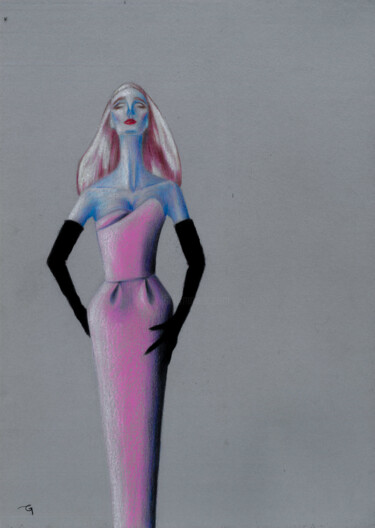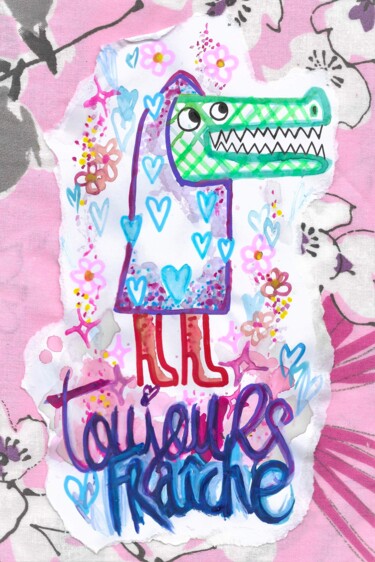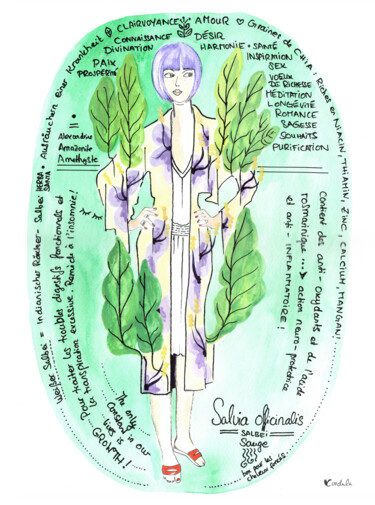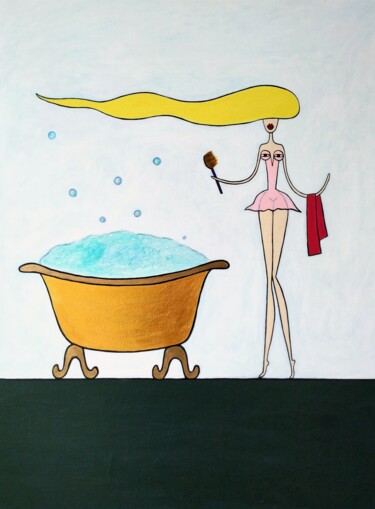13 Obras de arte originais, edições limitadas e gravuras:
Como definir estilo Arte ingénua ?
O que é arte ingênua?
O que é arte ingênua e como você define arte ingênua? A pintura Nave é um estilo de arte iniciado por artistas como Henri Rousseau, que não sabia muito sobre arte. Na maioria das vezes, a arte nave é definida como arte visual feita por alguém que não teve o treinamento e educação que um artista profissional tem. Quando um artista profissional tenta copiar esse estilo, isso costuma ser chamado de "primitivismo".
Qual é a definição de arte Naive?
A arte nave é geralmente definida como arte visual feita por alguém que não tem o treinamento formal e a educação que um artista profissional tem (em anatomia, história da arte, técnica, perspectiva, modos de ver). Quando um artista treinado tenta copiar esse estilo, às vezes é chamado de primitivismo, arte pseudo-nave ou arte nave falsa.
Ao contrário da arte popular, a arte nave não precisa vir de um contexto ou tradição cultural popular específica. De fato, pelo menos nas economias avançadas e desde a Revolução da Impressão, é impossível não conhecer a tradição local de belas artes, que se espalhou por meio de gravuras populares e outras mídias. Os artistas ingênuos conhecem as convenções de "belas artes", como perspectiva gráfica e convenções de composição, mas não podem ou não as usam em todo o seu potencial. A arte de fora (também chamada de "art brut"), por outro lado, refere-se a obras que vêm de um contexto semelhante, mas têm pouco a ver com o mundo da arte convencional.
A arte Nave é conhecida por ser simples e honesta como uma criança, e é por isso que muitas vezes é copiada. Esse tipo de pintura geralmente tem um estilo plano de desenho e uma maneira simples de mostrar profundidade. Henri Rousseau, pós-impressionista francês que viveu de 1844 a 1910 e foi descoberto por Pablo Picasso, foi um dos mais importantes pintores da "arte ingênua".
Houve algum desacordo sobre o que o termo significa e onde "termina" com outros termos como arte popular e arte marginal. A arte nave é geralmente usada para descrever obras de arte feitas por artistas autodidatas, como pinturas e esculturas. A arte popular, por outro lado, refere-se a coisas que podem ser usadas na vida cotidiana. Mas essa diferença tem sido discutida. "Provincial" é outra palavra que pode ser usada, especialmente para pinturas e edifícios. É usado principalmente para descrever o trabalho de artistas que tiveram algum treinamento tradicional, mas cujo trabalho fica aquém dos padrões metropolitanos ou da corte por acidente.
Quais são as características da arte ingênua?
Muitas vezes as pessoas pensam na arte náutica como obra de alguém de fora que não teve (ou não teve muito) treinamento ou diploma. Antes do século 20, isso era verdade, mas agora existem escolas de arte ingênua. A arte ingênua é agora um tipo de arte totalmente reconhecido que pode ser visto em galerias de todo o mundo.
As características da arte da nave não se encaixam bem com os aspectos formais da pintura, especialmente quando as três regras da perspectiva não são seguidas (como descrito pelos Pintores Progressistas do Renascimento):
- O tamanho das coisas diminui à medida que se afastam,
- As cores mudam à medida que você se afasta, -Os detalhes ficam menos claros à medida que você se afasta,
Aqui estão os resultados:
- Os efeitos de perspectiva são geometricamente errados (parecem desenhos infantis ou pinturas da Idade Média, mas é aí que a comparação termina).
- Forte uso de padrão, cor não refinada em todos os planos da composição, sem fragilizar o fundo. -Igual atenção aos detalhes, incluindo aqueles no fundo que devem ser sombreados.
As pessoas dizem que a arte ingênua é fácil de detectar porque não é complicada. Tornou-se tão popular e conhecido, porém, que muitos exemplos poderiam ser chamados de "pseudo-ingênuos".
A arte "pseudo nave" ou "nave falsa" é o trabalho de um artista que é mais imitativo ou autoconsciente e cujo trabalho parece mais copiado do que original. A arte "nave" é obra de um artista que não frequentou escola ou academia de arte, como Henri Rousseau ou Alfred Wallis.
Como o autodidatismo tornou-se mais popular como uma forma de aprender nos tempos modernos, é improvável que a ingenuidade estrita seja encontrada nos artistas modernos. Artistas vivos nem sempre gostam de categorizações ingênuas, mas é provável que isso mude à medida que sinais mais dignos se tornem conhecidos. Agora existem museus de arte ingênua em Kecskemét, Hungria; Kovaica, Sérvia; Riga, Letônia; Jaén, Espanha; Rio de Janeiro, Brasil; Vicq, França; e Paris. Gary Bunt, Lyle Carbajal, Gabe Langholtz, Gigi Mills, Barbara Olsen, Paine Proffitt e Alain Thomas são todos artistas vivos de língua inglesa que admitem ter um estilo ingênuo.
"Arte primitiva" é outro termo que as pessoas que não estudaram arte costumam usar para descrevê-la. Historicamente, porém, tem sido mais usado para descrever a arte de culturas que a academia ocidental considerou "primitivas" social ou tecnologicamente, como a arte dos nativos americanos, da África subsaariana e das ilhas do Pacífico (ver arte tribal). Isso é diferente do movimento autoconsciente de inspiração "primitiva" chamado "primitivismo". A arte popular é outro termo semelhante à arte nave, mas não é a mesma coisa.
Existem também os termos "navismo" e "primitivismo", que geralmente são usados para descrever pintores profissionais que usam a arte nave como seu estilo (como Paul Gauguin, Mikhail Larionov, Paul Klee).
Quais são as características das pinturas ingênuas?
A arte Nave às vezes é usada para descrever a arte feita por pessoas sem treinamento ou diploma profissional. Antes do século 20, isso era verdade, mas agora existem academias de pintura de naves. Agora, a arte naif é uma forma de arte bem conhecida que pode ser vista em galerias de todo o mundo. As partes formais da pintura são estranhamente semelhantes às coisas que compõem a arte da nave, especialmente quando se trata de não seguir as três regras da perspectiva.
-À medida que as coisas se afastam, seus tamanhos diminuem.
-Conforme você se afasta de uma cor, ela se torna menos vívida.
-Conforme você se afasta, os detalhes ficam menos claros.
Um dos resultados é que os efeitos de perspectiva estão errados do ponto de vista geométrico. Não há enfraquecimento do fundo em nenhum dos planos da composição, e há muitos padrões. O mesmo cuidado foi dado a todos os detalhes, mesmo os do fundo que deveriam ser mais escuros.
As pessoas dizem que a arte nave é fácil de reconhecer porque não tem muitos detalhes. Mas porque se tornou um estilo tão conhecido, muitas peças podem ser colocadas nas categorias pseudo-nave ou primitivismo. O autodidatismo está se tornando mais popular como uma forma de aprender, então a ingenuidade estrita não é algo que você vê com frequência nos artistas hoje.
Artistas vivos nem sempre aceitam categorizações simples, mas isso provavelmente mudará à medida que sinais mais dignificantes se tornarem disponíveis.
Discover contemporary artworks on Artmajeur
Contemporary art is a vibrant constellation of artistic expressions. This creative universe encompasses a wide array of mediums, from paintings, sculpture, and photography to drawing, printmaking, textile art, and digital art, each medium a star shining with its own distinct radiance. Artists use diverse supports and materials to bring their visions to life, such as canvas, wood, metal, and even innovative digital canvases for the creation of virtual masterpieces.
A contemporary painting, for instance, may weave its story through the masterful strokes of acrylic or oil, while a contemporary sculpture might sing its song in the language of stone, bronze, or found objects. The photographic arts capture and manipulate light to produce striking images, while printmaking employs techniques like lithography and screen-printing to produce multiples of a single, impactful image. Textile art plays with fabrics and fibers, whereas digital art pushes the boundaries of creation with innovative technology.
The allure of contemporary art lies in its boundary-pushing nature, its relentless quest for experimentation and its constant reflection of the evolving human experience. This boundless creativity, coupled with its strong social and personal commentary, makes every piece of contemporary art a unique emblem of its time, a mirror held up to the realities and dreams of our complex world. It whispers to us, moves us, provokes thought, and kindles a deep emotional response, stirring the soul of anyone willing to listen. It is, indeed, the language of emotions and ideas, spoken in the dialect of our era.

©2024 Noir
Origins and history of contemporary art
The story of contemporary art unfolds in the mid-20th century, marked by seismic shifts in artistic expression. Post-World War II, around the 1950s and 1960s, artists began experimenting beyond traditional confines, challenging the norms of what art could be. This revolutionary epoch birthed myriad new movements and artistic forms such as abstract expressionism, pop art, and minimalism. Paintings, once confined by realism, embraced abstraction, as artists used color and form to express emotions and ideas. Notable periods like the advent of pop art in the late 1950s and early 1960s saw artworks mimicking popular culture and mass media, reflecting society’s shifting focus.
The sculptural arts, too, witnessed a metamorphosis. Sculptors started to experiment with new materials and forms, often creating artworks that interacted with the viewer and the surrounding space, fostering a sense of engagement. Drawing, a timeless practice, also evolved, with artists incorporating innovative techniques and concepts to redefine its role in contemporary art.
Photography, a relatively new medium, emerged as a powerful tool in the contemporary art landscape. Born in the 19th century, it truly came into its own in the latter half of the 20th century, blurring the lines between fine art and documentation. Printmaking, a practice dating back to ancient times, saw renewed interest and experimentation with techniques like lithography, etching, and screen printing gaining prominence.
The realm of textile art expanded dramatically, as artists began to appreciate the versatility and tactile quality of fabric and fibers. Artists began using textiles to challenge the boundaries between fine art, craft, and design.
The dawn of digital technology in the late 20th century heralded a new age for contemporary art. Digital art emerged as artists started leveraging new technologies to create immersive, interactive experiences, often blurring the line between the virtual and the physical world.
Through these transformative periods, the essence of contemporary art has remained the same: a dynamic, evolving reflection of the times we live in, continually pushing boundaries and embracing the new, always questioning, always exploring.
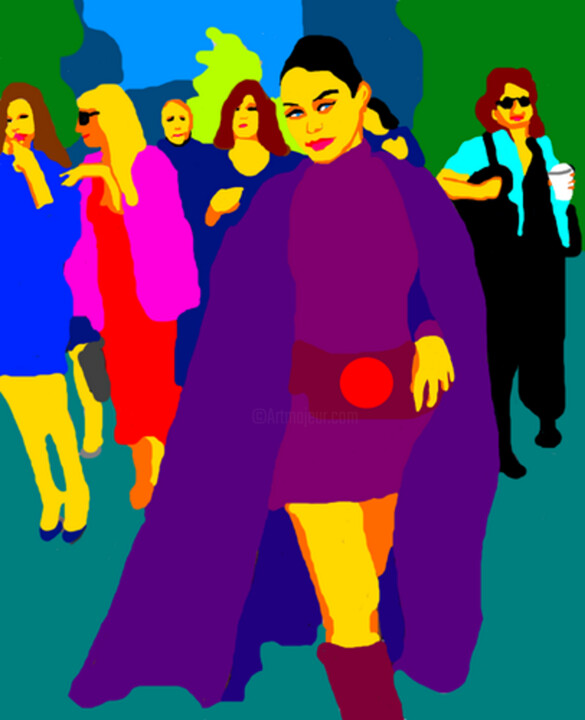
©2023 Stephane Pruvot
Evolutions of theses contemporary works in the art market
As we navigate through the 21st century, the dynamic landscape of contemporary art continues to evolve and expand, reflecting our ever-changing world. Contemporary paintings, once primarily confined to two-dimensional canvases, now embrace a multitude of forms and techniques, ranging from mixed media installations to digital creations, each piece a rich a weaving of thoughts, emotions, and narratives. Sculpture, too, has ventured far beyond traditional stone and bronze, with artists incorporating light, sound, and even motion, embodying the ephemerality and flux of the modern world.
Photography, in the hands of contemporary artists, has expanded its horizons, seamlessly blending with digital technology to create breathtaking imagery that challenges our perception of reality. Drawing, as well, has transcended the borders of paper, incorporating multimedia elements and exploratory techniques to redefine its role in the artistic discourse. Printmaking continues to flourish, with contemporary artists using traditional methods in innovative ways to deliver potent social and personal commentaries.
Textile art, once considered a craft, now holds a prominent place in the contemporary art world, with artists using it to explore issues of identity, tradition, and cultural heritage. Meanwhile, digital art, the newest member of the contemporary art family, has revolutionized the way we create and interact with art, presenting immersive experiences that blur the boundary between the virtual and the physical.
These diverse forms of contemporary art hold significant value in the current art market, not only due to their aesthetic appeal but also their ability to encapsulate and communicate complex ideas and emotions. Collectors, curators, and art lovers worldwide seek these works, drawn to their inherent dynamism, their innovative use of materials, and their eloquent expressions of our shared human experience. As a testimonial to our times, these contemporary artworks encapsulate the pulse of our society and the resonance of individual voices, forever etching our collective narrative into the annals of art history.
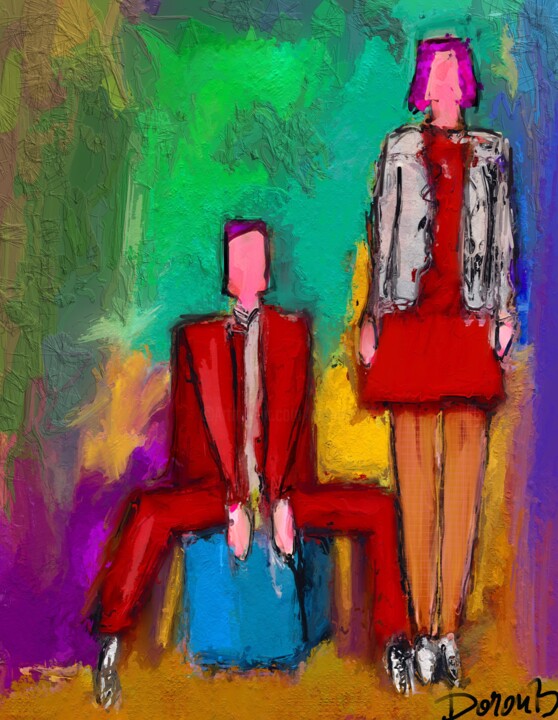
©2017 Doron B
Famous Contemporary Artists
As we delve into the vibrant realm of contemporary art, we encounter an array of artists who shape this dynamic field. Each a master in their medium - painting, sculpture, photography, drawing, printmaking, textile, or digital art - they push artistic boundaries, reflecting our era and challenging perceptions. Let’s explore these remarkable contributors and their groundbreaking works.
1. Gerhard Richter - Known for his multi-faceted approach to painting, Richter challenges the boundaries of the medium, masterfully oscillating between abstract and photorealistic styles. His works, whether featuring squeegee-pulled pigments or blurred photographic images, engage in a fascinating dialogue with perception.
2. Jeff Koons - A significant figure in contemporary sculpture, Koons crafts monumental pieces that explore themes of consumerism, taste, and popular culture. His iconic balloon animals, constructed in mirror-polished stainless steel, captivate with their playful yet profound commentary.
3. Cindy Sherman - An acclaimed photographer, Sherman uses her lens to explore identity and societal roles, particularly of women. Renowned for her conceptual self-portraits, she assumes myriad characters, pushing the boundaries of photography as a medium of artistic expression.
4. David Hockney - Hockney, with his prolific output spanning six decades, is a pivotal figure in contemporary drawing. His bold use of color and playful exploration of perspective convey an intoxicating sense of joy and an unabashed celebration of life.
5. Kiki Smith - An innovative printmaker, Smith’s work explores the human condition, particularly the female body and its social and cultural connotations. Her etchings and lithographs speak to universal experiences of life, death, and transformation.
6. El Anatsui - A master of textile art, Anatsui creates stunning tapestry-like installations from discarded bottle caps and aluminum scraps. These shimmering, flexible sculptures blend traditional African aesthetic with contemporary art sensibilities, speaking to themes of consumption, waste, and the interconnectedness of our world.
7. Rafael Lozano-Hemmer - A leading figure in digital art, Lozano-Hemmer utilizes technology to create interactive installations that blend architecture and performance art. His work, often participatory in nature, explores themes of surveillance, privacy, and the relationship between people and their environments.
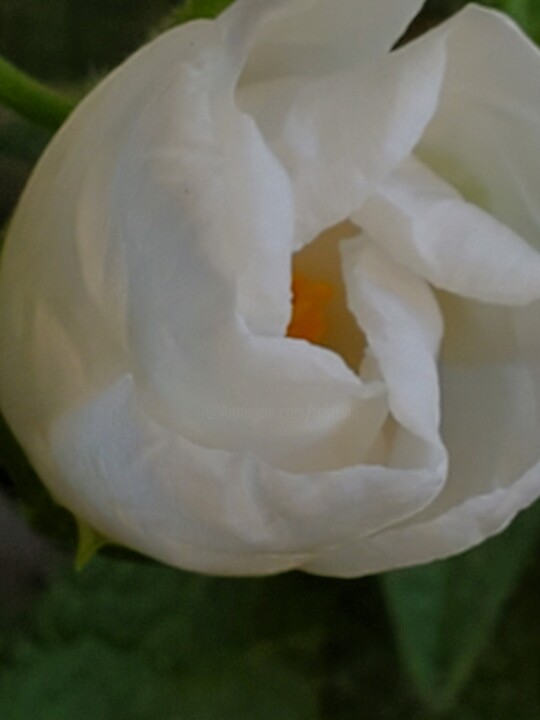
©2023 Jean-Pierre Tastevin
Notable contemporary artworks
The contemporary art landscape is a dynamic patchwork of diverse expressions and groundbreaking ideas, each artwork a unique dialog with its audience. Here are a selection of some renowned contemporary artworks, spanning various media such as painting, sculpture, photography, drawing, printmaking, textile art, and digital art, that have profoundly influenced this vibrant movement.
"Cloud Gate" by Anish Kapoor, 2006 - This monumental stainless steel sculpture, also known as "The Bean," mirrors and distorts the Chicago skyline and onlookers in its seamless, liquid-like surface, creating an interactive experience that blurs the line between the artwork and the viewer.
"Marilyn Diptych" by Andy Warhol, 1962 - An iconic piece of pop art, this silkscreen painting features fifty images of Marilyn Monroe. Half brightly colored, half in black and white, it reflects the dichotomy of celebrity life and its influence on popular culture.
"Rhein II" by Andreas Gursky, 1999 - This photographic artwork, a digitally-altered image of the Rhine River, is celebrated for its minimalist aesthetic. It strips the landscape to its bare essentials, invoking a sense of tranquility and vastness.
"Black Square" by Kazimir Malevich, 1915 - A revolutionary painting in the realm of abstract art, this piece, featuring nothing more than a black square on a white field, challenges traditional notions of representation, symbolizing a new era in artistic expression.
"Puppy" by Jeff Koons, 1992 - This giant sculpture, a West Highland Terrier blanketed in flowering plants, explores themes of innocence, consumer culture, and the interplay between high art and kitsch. It’s a delightful blend of traditional sculpture and garden craft.
"Re-projection: Hoerengracht" by Ed and Nancy Kienholz, 1983-1988 - A room-sized tableau representing Amsterdam’s red-light district, this work combines elements of sculpture, painting, lighting, and found objects. It engages viewers in a stark commentary on commodification and objectification.
"Untitled" (Your body is a battleground) by Barbara Kruger, 1989 - This photomontage, combining black-and-white photography with impactful text, explores issues of feminism, identity, and power. Its potent, confrontational message is a prime example of the power of text in contemporary visual art.
"For the Love of God" by Damien Hirst, 2007 - This sculpture, a platinum cast of a human skull encrusted with 8,601 diamonds, probes themes of mortality, value, and the human fascination with luxury and decadence. It’s a compelling blend of macabre and magnificence.
"Physical impossibility of Death in the Mind of Someone Living" by Damien Hirst, 1991 - This artwork, featuring a tiger shark preserved in formaldehyde, blurs the line between traditional sculpture and biological specimen. It prompts viewers to contemplate mortality and nature’s ferocity.
"One and Three Chairs" by Joseph Kosuth, 1965 - A piece of conceptual art, it presents a physical chair, a photograph of a chair, and a dictionary definition of a chair, thus exploring the relationship between language, picture, and referent in art.
These pieces, in their diversity, exemplify the rich tapestry of contemporary art, each piece a unique commentary on our world and a testament to the limitless potential of creative expression.

Albena Vatcheva
Óleo em Tela de linho | 5,9x5,9 in
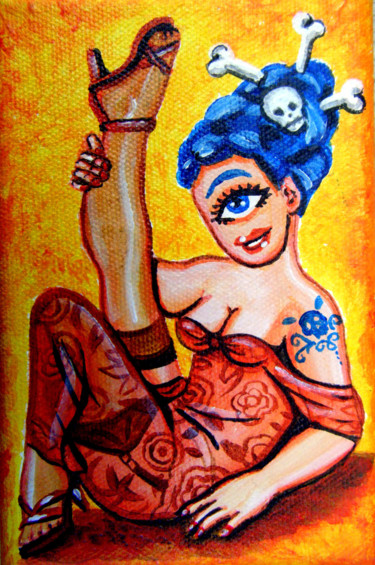
Florence H
Acrílico em Tela | 5,9x3,9 in

Doron B
Artes digitais | Vários tamanhos


